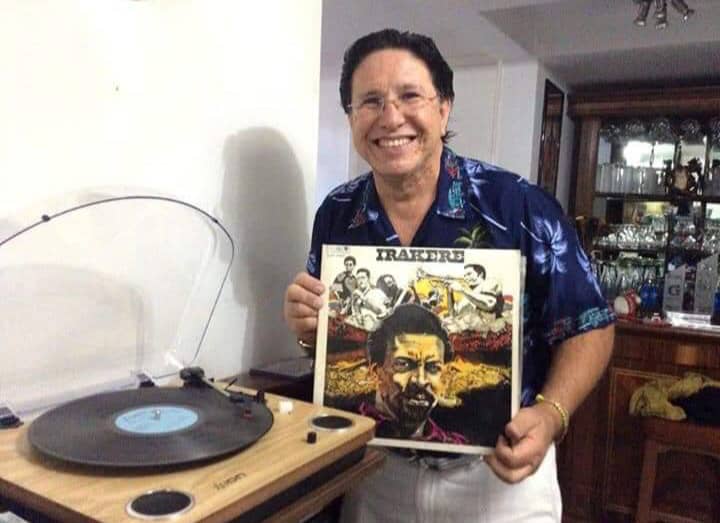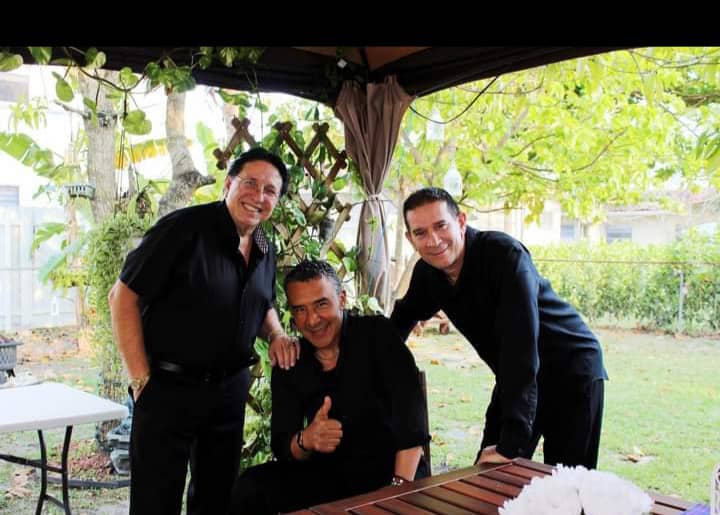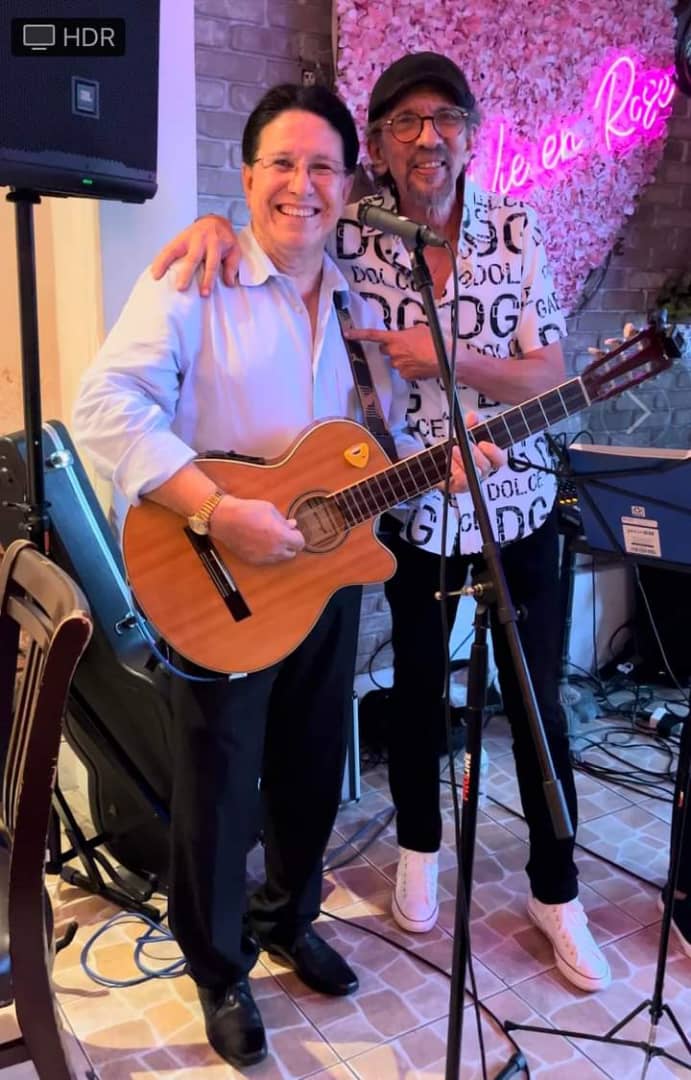
Tony Barly's life and work have to be rewritten all the time. Usually, first names mark the introduction, but with him, many things are the exception. Antonio Jorge Barly Martínez, Tony, comes up when we talk about the group Los Zurik, Luz Negra, Luz de Cuba. He comes up whenever we talk about Cuban music.
He was born in Las Tunas 65 years ago, on 11 August 1958. Maceo Park was his playground, his dreams, and his love. An image that he never blurs because his energies and ancestors are anchored there.
He would not say that he carries Cuban culture with him because of the instrument he plays, the tres, nor even because of the various project names he has created, nor because of the constant will to return to his land and his home; he carries it in his blood because of the mixture of Chinese, Creole and - somehow - a strong African gene. All this is easy to see in his broad smile, his brotherhood, his clean and full soul. Tony has Cuba also where his children, grandchildren, and friends are, where he can find old and new friends, and where he can listen to notes that remind him of his Island.

When talking about Cuban Culture in the diaspora, his name is there, as well as in the excellent economic analyses, because that was his first professional training. His name is in his support for young people and anyone who needs it, in his music and optimism about the sea and rivers. Some time ago I wrote about his time with Los Surik and Luz de Cuba; but I return to him on the occasion of his birthday, which he is also celebrating with the creation of another musical format, with the smell of cane, tobacco, and rum: Buena Isla.
Buena Isla brings the evident Cuban sonority, a repertoire of pieces recognized the world over, which makes them face the challenge of doing it with excellence for a mainly Cuban public.
Their first performance was a success, the audience got into the flavor and ended up singing and dancing with the group to the iconic song Bonito y Sabroso, by Benny Moré. "There are always nerves in the first few minutes until you hear that it sounds good and see the reaction of the audience," says Tony Barly.
The fundamental ingredients for success are love, respect, and perseverance for what one does, and Tony Barly is the living image of the tireless creator. For him, it is important to be grateful for what you have, as philosophy states that you have to want it and then fight for it.
Buena Isla glimpses his longing not to leave his roots, memories, and essences behind. It is the pretext or the link to meet promising artists such as Danilo París, a Cuban from the municipality of Las Tunas in Colombia, a Latin Pop revelation. But the satisfaction took on the nuances of years spent with Ernesto Márquez, a renowned Cuban musician.
Signifying Tony's years is a way of highlighting that men are there to leave their mark at all times, and this is one of the best.
When I read some material written by him about his desire and dreams of making music wherever he is, I wanted to know more about his current project; as the tresero says: "Starting from scratch is difficult, but step by step you make your way."
 • What effect does music have on you?
• What effect does music have on you?
It's something magical, something that came into my life at the age of 12 with the passion of a teenager, the kind that makes you change toys, plans, and dreams of every child. It is the balm that makes me forget the bad things, that relieves me of absences and losses. It's still a passion, that passion that - even though I'm working on something else - is there alive, boiling. Music has been the love of my life.
• Who are the members of the new Buena Isla project?
Rafael Sotomayor, pianist, choir, orchestrator, musical producer, and musical director. Jorge Félix Del Monte ("El Chino"), singer and percussionist, and myself, guitar, tres and bass guitar, backing vocals, public relations, promotion, publicity, and General Director. With Sotomayor, I shared this passion for 18 years with the group Luz de Cuba (Mexico/ 2000-2018).
• What genres make up the repertoire?
The repertoire is 90% Cuban, covering almost all the genres of our music, such as son, guaracha, bolero, chachachá, mambo, and danzón. And the other 10% is made up of Latin genres such as merengue, cumbia, and bachata, among others.
• Does the current format allow for fusion?
Based on Cuban music and its genres, and as defenders and promoters of it, we decided to call the project Buena Isla, because we come from the country that has contributed the most musical genres to the world.
In addition to the aforementioned, the Cuban punto, the pa acá, Mozambique, the pilón, the sucu-suco, the changüí, the songo, and the timba, among others, are added to this list. Imagine we have been a musical power with a great old and new school.
• Contemporary music studies are becoming more and more complex due to the use of technology, are you in tune with this development?
We are a small group (3 elements) and we work the orchestrations for a band of about 12 members, only that live we play with piano, guitar, and minor percussion, including bongoes, in addition, we use tracks that we record in our studio, where using technology we can add the complete percussion, bass, brass and any instrument that is necessary according to the genre and arrangement (violins, accordion, etc), this gives us the freedom to play any genre and to achieve the taste and sonority that the public hears and enjoys in each presentation.
Since 1999, when we arrived in Mexico, we were forced to reduce the number of members of the group to obtain more decent salaries, so we began to use what we called sequences. This has evolved a lot, today they are tracks or audios, and using timbres sampled from the real sounds of the instruments, we manage to humanize the result more.
• What advice would you give to young artists?
To young artists I can only advise them to study, to prepare themselves and never give up their dreams, to persevere, but - above all - to be disciplined and professional, no matter if they play at the Tanque de Buena Vista or La Scala in Milan, they should do it with the same rigor. And remember that "musical talent and intelligence rarely go together, listen to advice and let yourself be guided by those who can make your dreams come true."
• To what extent do music and audiences bring you closer to your homeland, to your roots?
Fortunately, since the 1940s, Cuban music has internationalized and taken root in Mexico in such a way that we have experienced the best moments of artistic achievement as defenders of its genres. The fact that the public asks for a chachachá or a danzón, something that no longer happens in Cuba (the birthplace of these genres) forced us to be more Cuban and to be closer to our roots and our homeland.
...
Tony Barly is a Cuban musician who does not believe in the impossible, he still thinks that millions of people are looking for the attractions of Cuban music and that is the greatest incentive and the greatest opportunity. New goals and sonorities nourish his path.






